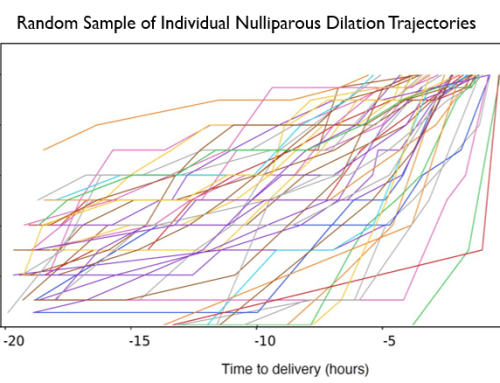Research Summary:
Evaluating the impact of the laborist model of obstetric care on maternal and neonatal outcomes*
 By Emily Hamilton, MD CM, Senior Vice President of Clinical Research
By Emily Hamilton, MD CM, Senior Vice President of Clinical Research
This study, published in the August 13th issue of the American Journal of Obstetrics & Gynecology, examines outcomes before and after the introduction of a laborist model of care. Surprisingly, very few differences were noted when comparing changes over time in the hospitals with laborists to changes over the same period of time in the matched hospitals without laborists. This paper describes an interesting methodology to try and tease apart the effect of various factors on obstetrical outcomes. This is relevant because most quality improvement initiatives are studied in a before-and-after fashion and not in a prospective randomized trial.
The study is discharge summary data to NPIC between 1998 and 2011. Results from three hospitals where laborists were introduced were compared to six control hospitals matched for delivery volume, geographical area, teaching hospital status and level of neonatal nursery.
Once adjustment was made for several patient-related factors, no differences were observed in the odds ratio (OR) for any of the neonatal outcomes or for cesarean rates. The OR was reduced only for induction of labor (0.85 95%CI 0.71-0.99) and for Preterm Birth (0.83 95%CI 0.72-0.96). Although the OR for Preterm Birth was reduced this was not accompanied by a change in the OR for the birth of babies weighing
In short, the introduction of laborists was associated with a change in medical behavior (Induction of labor) and some change in actual outcome (preterm births), but not in low-birth-weight babies. A question that springs to mind immediately is the role of unmeasured factors such as policies to curtail elective induction of labor prior to 39 weeks that became common during this timeframe and were not adopted by all hospitals at the same time. Evidently the desire to improve is alive and well in many hospitals and there is no single solution for all.
Reference:
*Srinivas SK, Small DS, Macheras M, Hsu JY, Caldwell D, Lorch S. Evaluating the impact of the laborist model of obstetric care on maternal and neonatal outcomes. Am J Obstet Gynecol. 2016 Aug 13. https://www.ncbi.nlm.nih.gov/pubmed/27530491








